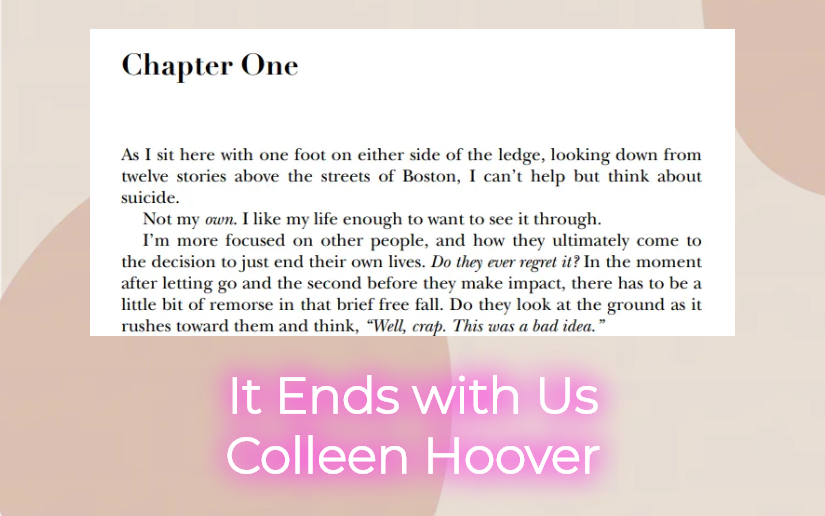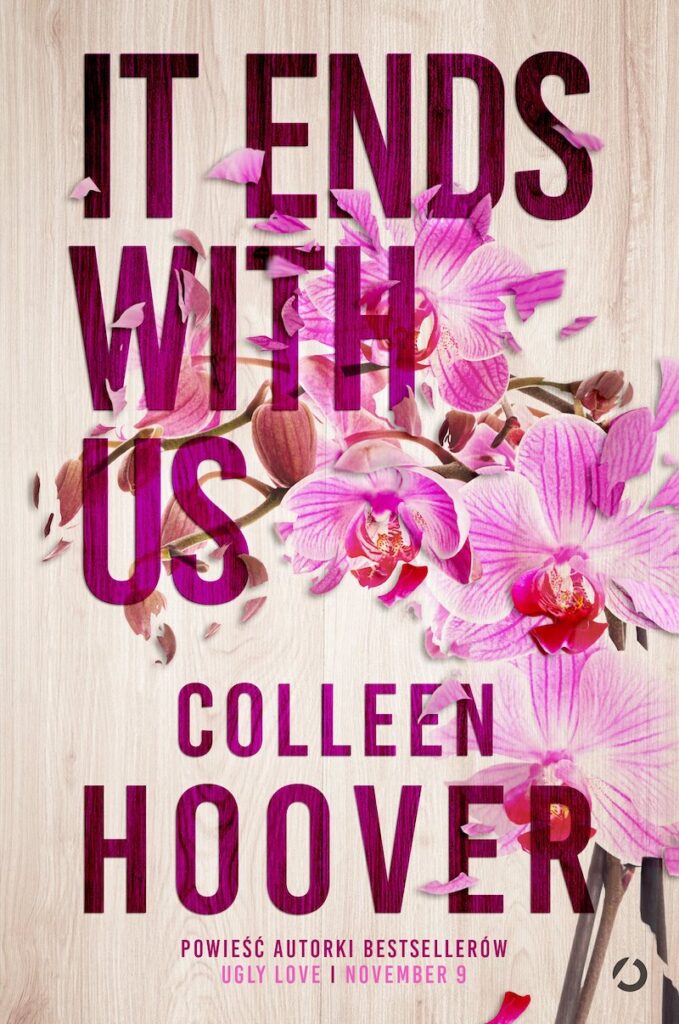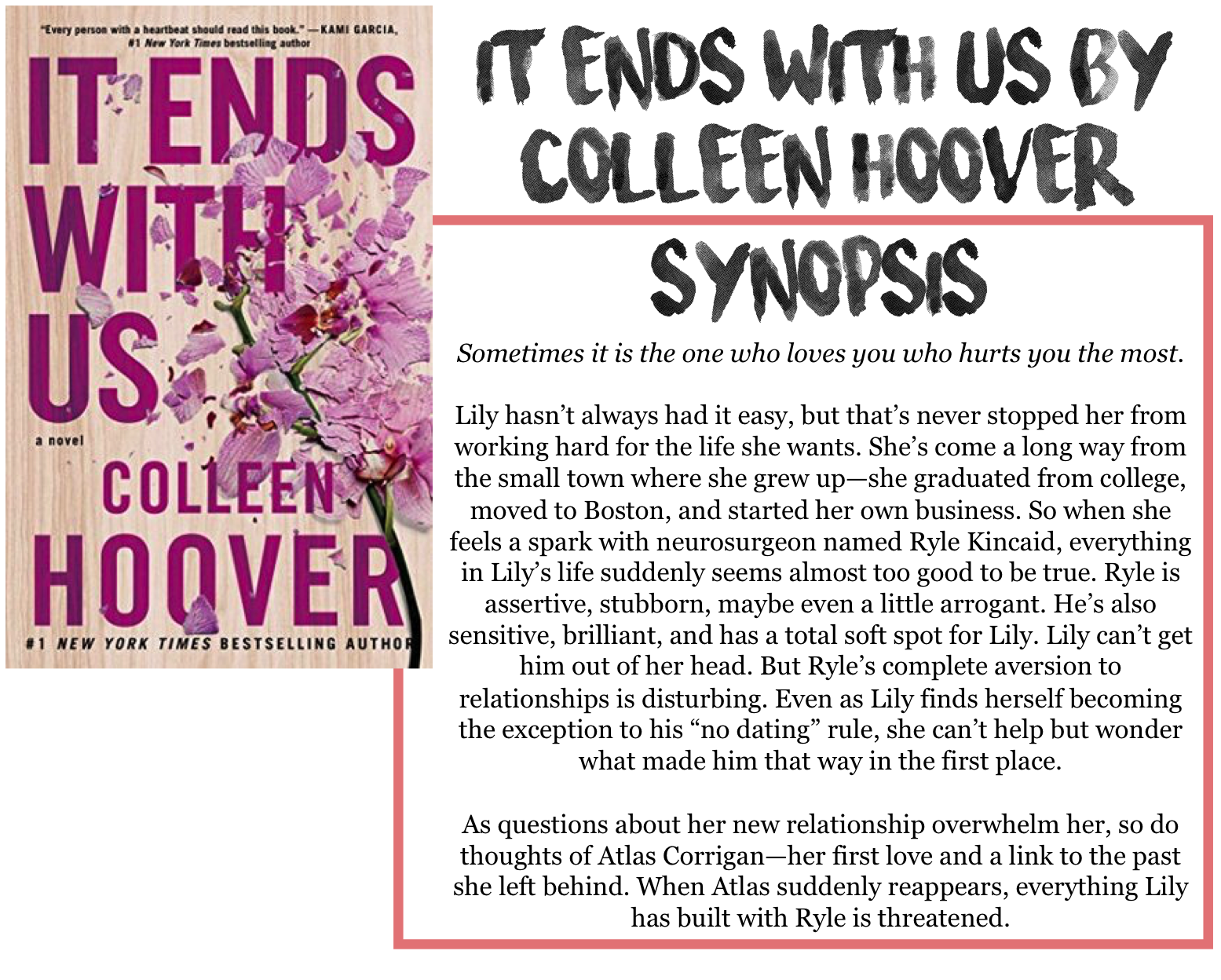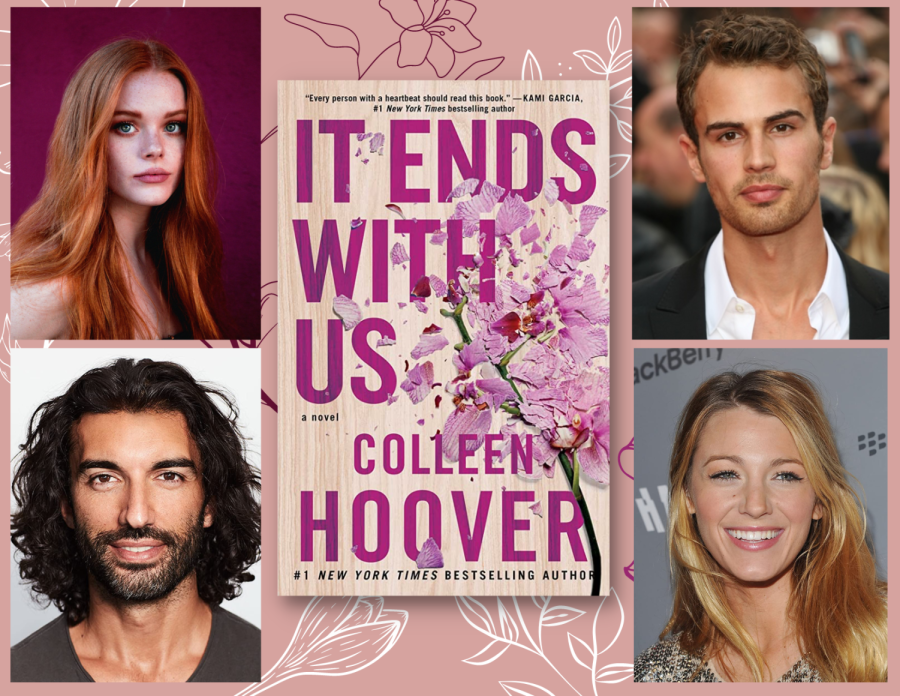It Ends With Us: A Comparative Analysis of Book and Movie
Related Articles: It Ends With Us: A Comparative Analysis of Book and Movie
Introduction
With great pleasure, we will explore the intriguing topic related to It Ends With Us: A Comparative Analysis of Book and Movie. Let’s weave interesting information and offer fresh perspectives to the readers.
Table of Content
It Ends With Us: A Comparative Analysis of Book and Movie

The 2023 film adaptation of Colleen Hoover’s bestselling novel, It Ends With Us, captivated audiences, sparking a wave of discussions and comparisons between the book and its cinematic counterpart. This article delves into a comprehensive analysis of both the novel and the film, highlighting their strengths, weaknesses, and the key differences that set them apart.
Book Review: A Deeper Dive into the Psyche of the Characters
Colleen Hoover’s It Ends With Us is a poignant and raw exploration of domestic abuse, love, and the complexities of human relationships. The novel excels in its character development, allowing readers to delve into the inner turmoil and motivations of Lily, the protagonist, and her tumultuous relationships with Ryle, a charming neurosurgeon, and Atlas, her first love.
Strengths:
- Intense Emotional Connection: The novel’s greatest strength lies in its ability to evoke a deep emotional connection with the characters. Hoover masterfully crafts Lily’s journey, allowing readers to experience her pain, fear, and ultimately, her resilience.
- Realistic Portrayal of Abuse: The portrayal of domestic abuse in the novel is unflinching and realistic, highlighting the insidious nature of such relationships. Hoover avoids romanticizing the abuse, instead presenting a chillingly accurate depiction of its psychological and emotional impact.
- Compelling Narrative: The story unfolds through Lily’s perspective, allowing readers to witness the events through her eyes. This first-person narrative creates a sense of intimacy and immediacy, drawing readers into the emotional rollercoaster of Lily’s life.
- Exploration of Trauma and Healing: The novel delves into the lasting effects of childhood trauma and the arduous process of healing. It explores the complexities of forgiveness, self-love, and the power of human connection in overcoming past wounds.
Weaknesses:
- Predictable Plot: While the emotional impact of the novel is undeniable, the plot can feel predictable at times. Some readers might find the narrative’s progression and the eventual resolution to be somewhat formulaic.
- Limited Character Development: While Lily’s character is deeply explored, some secondary characters, particularly Ryle’s family, feel underdeveloped. This can lead to a sense of detachment from their perspectives and motivations.
Movie Review: A Visual Interpretation with its Own Strengths and Flaws
The film adaptation of It Ends With Us aims to translate the novel’s emotional core onto the screen, using visuals and performances to capture the essence of Lily’s journey. While the film stays true to the overarching narrative, it makes certain changes to the storyline and characterizations.
Strengths:
- Powerful Performances: The film benefits from strong performances from its leads, particularly Blake Lively as Lily and Justin Baldoni as Ryle. Their portrayals effectively convey the characters’ emotional complexities and the intensity of their relationship.
- Visually Stunning: The film is visually appealing, with a captivating aesthetic that enhances the emotional impact of the story. The use of lighting, camera angles, and music effectively contributes to the overall atmosphere of the film.
- Exploration of Themes: The film effectively explores the themes of domestic abuse, forgiveness, and the power of self-love. It provides a visual representation of the emotional toll of abuse and the journey towards healing.
Weaknesses:
- Condensed Narrative: The film’s adaptation necessitates a condensed narrative, which can lead to a feeling of rushed pacing. Some key events from the novel are omitted or glossed over, potentially impacting the overall emotional impact.
- Simplified Character Development: Some characters, particularly those from the novel’s secondary storylines, are simplified in the film adaptation. This can detract from the depth and complexity of the novel’s characters.
- Departure from the Source Material: The film deviates from the novel in certain aspects, particularly in the portrayal of Ryle’s character and the resolution of the story. These changes may not resonate with all readers who have enjoyed the book.
Key Differences Between Book and Movie
- Ryle’s Character: In the book, Ryle’s character is portrayed as more complex and nuanced, with a deeper exploration of his past and his motivations for his actions. The film, however, simplifies his character, focusing primarily on his abusive tendencies.
- The Resolution: The film’s resolution deviates significantly from the novel, offering a more optimistic and less ambiguous ending. This change may appeal to some viewers but could leave others feeling dissatisfied.
- The Role of Atlas: The film reduces Atlas’s role in the story, focusing primarily on his romantic relationship with Lily. In the book, Atlas plays a more significant role, offering Lily support and a sense of stability.
Related Searches:
- It Ends With Us Book vs Movie Differences: This search explores the key differences between the book and the film, highlighting the adaptations and changes made for the screen.
- It Ends With Us Movie Ending Explained: This search aims to understand the film’s ending, explaining the changes made from the book and the overall message conveyed.
- It Ends With Us Book Review: This search provides reviews and analysis of the novel, focusing on its themes, characters, and overall impact.
- It Ends With Us Movie Review: This search offers reviews and analysis of the film adaptation, evaluating its strengths, weaknesses, and its faithfulness to the source material.
- Colleen Hoover Books: This search explores other works by Colleen Hoover, allowing readers to discover similar themes and styles in her other books.
- Domestic Abuse Books: This search explores books that deal with the theme of domestic abuse, offering readers a broader understanding of this complex issue.
- Romance Books: This search provides recommendations for romance novels, catering to readers who enjoyed the romantic elements of It Ends With Us.
- Books Turned Into Movies: This search explores other books that have been adapted into films, allowing readers to discover other popular adaptations.
FAQs:
Q: Is the movie a faithful adaptation of the book?
A: While the film stays true to the overarching narrative of the book, it makes certain changes to the storyline and characterizations. The film’s ending deviates significantly from the novel, offering a more optimistic resolution.
Q: Is the movie better than the book?
A: The answer to this question is subjective and depends on personal preferences. Some viewers may find the film’s visual storytelling and performances more engaging than the book’s narrative. Others may prefer the book’s deeper exploration of characters and the more complex and nuanced portrayal of abuse.
Q: Does the movie trigger viewers?
A: The film deals with sensitive themes such as domestic abuse and trauma, and some viewers may find these themes triggering. It is important to be aware of these themes before watching the film and to seek support if needed.
Tips:
- Read the book first: If you are unfamiliar with the story, it is recommended to read the book before watching the film. This will allow you to experience the full depth and complexity of the story and characters.
- Be prepared for emotional impact: Both the book and the film deal with sensitive themes that can evoke strong emotions. Be prepared for the emotional rollercoaster of the story.
- Engage in discussions: After reading the book or watching the film, engage in discussions with others who have experienced the story. Sharing your thoughts and feelings can be a valuable way to process the themes of the story.
Conclusion:
The film adaptation of It Ends With Us is a visual interpretation of Colleen Hoover’s bestselling novel, offering a different perspective on the story and its characters. While the film stays true to the overarching narrative, it makes certain changes to the storyline and characterizations. Ultimately, both the book and the film offer a powerful exploration of domestic abuse, love, and the complexities of human relationships. The choice between the two depends on personal preferences and the desired level of engagement with the story’s themes. Whether you prefer the book’s deeper exploration of characters or the film’s visual storytelling, It Ends With Us is a story that will leave a lasting impact on readers and viewers alike.








Closure
Thus, we hope this article has provided valuable insights into It Ends With Us: A Comparative Analysis of Book and Movie. We hope you find this article informative and beneficial. See you in our next article!